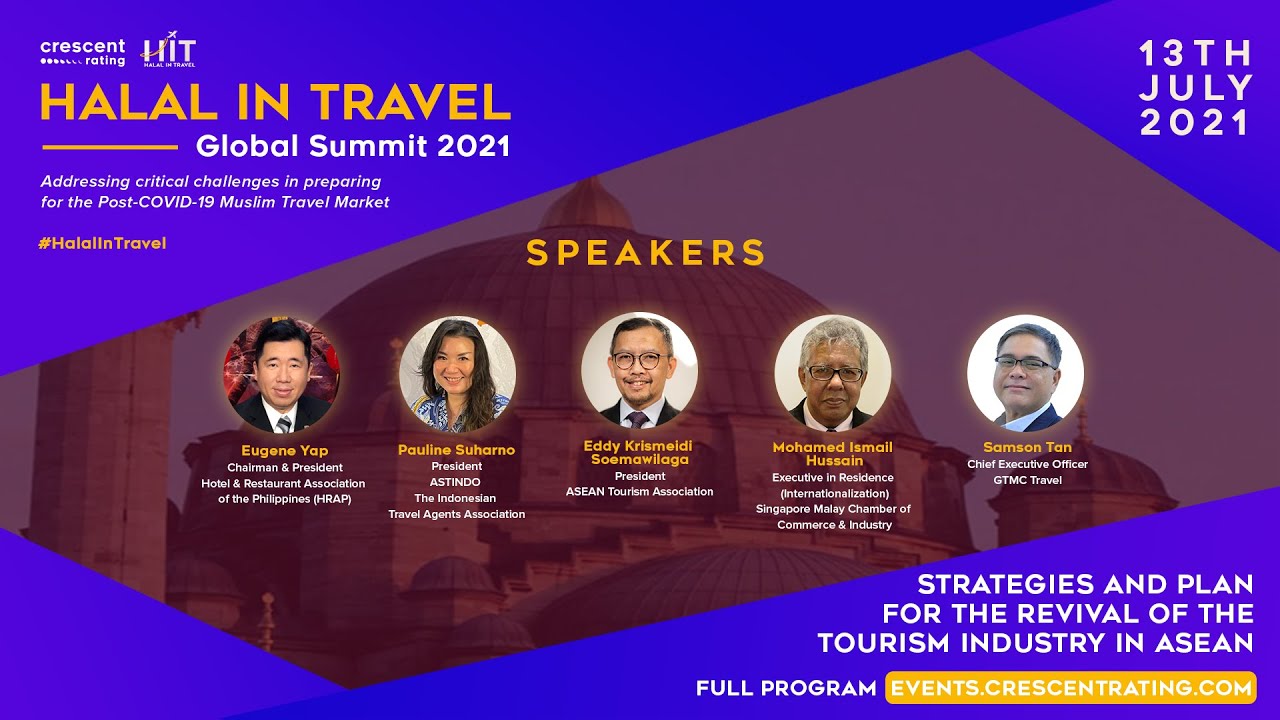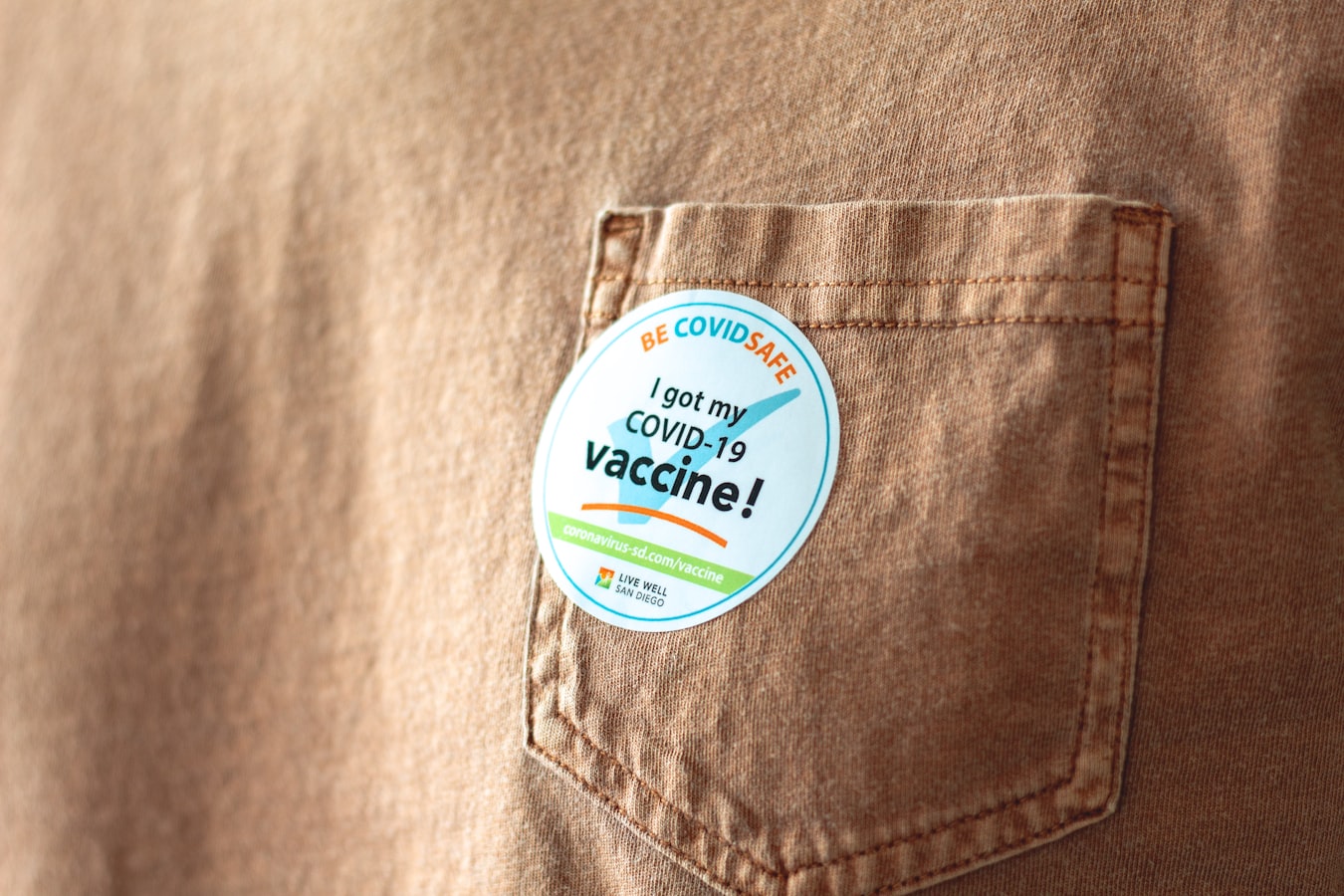
The arrival and deployment of COVID-19 vaccines in Southeast Asia gave hope that the pandemic may come to an end sooner than what was earlier projected.
But despite this, uncertainties continue to prevail on how to navigate the ASEAN tourism scene in a post-pandemic era.
Image Credits: Taylor Simpson on Unsplash
As part of the Halal in Travel - Global Summit 2021, CrescentRating launched the webinar titled Strategies & Plans for the Recovery of ASEAN Tourism Industry.
CrescentRating partnered with key figures in Southeast Asia's tourism sector to provide airlines, hotels, tour operators, and travel agencies around the region much-needed insights for the safe and eventual resumption of leisure travel.
“The recent reports on the slowly declining numbers in most countries as well as the anticipated easing on the borders including Thailand, Singapore, Brunei, Indonesia, and Vietnam offers some optimism for tourism within ASEAN. Along with the vaccine roll-out around the world, there are positive sentiments that travel may recover earlier than predicted – in 2023,” said Mohamed Ismail Hussain, Executive in Resident of the Singapore Malay Chamber of Commerce and Industry and the moderator of the virtual event.
The webinar aired on July 22, and its resource speakers included Eddy Krismeidi Soemawilaga (President, ASEAN Tourism Association), Pauline Suharno (President, ASTINDO - The Indonesian Travel Agents Association), Samson Tan (Chief Executive Officer, GTMC Travel), and Eugene Yap (Chairman & President, Hotel & Restaurant Association of the Philippines / HRAP).
Read on to learn key takeaways from the experts themselves.
Image Credits: Fahrul Azmi on Unsplash
ASEAN is a crucial destination for Muslims doing leisure travel. And stakeholders are mulling to pursue intra-ASEAN travel as a swift and feasible solution in a post-COVID setting.
Soemawilaga said that in 2019, 60 million out of the 136 million tourists recorded in Southeast Asia happened to be travelers from member-countries, highlighting the significance of prioritizing intra-regional travel to immediately resuscitate the badly hit tourism industry.
“Of course, this kind of Intra-ASEAN travel has been recognized by all… ASEAN is a big, significant market itself. And we have to remember… that the closest neighbor is the easiest we can tap on. We can also understand the market better not only from the industry point of view but also from the government point of view,” said Soemawilaga.
The ASEANTA top official announced that they are expecting key executives from the ASEAN body to produce the complete terms of reference for the intra-ASEAN travel corridor this October. The Intra-ASEAN travel arrangement was first raised officially and publicly in November 2020.
Image Credits: Ismail Mohamed - SoviLe on Unsplash
The panel, during the webinar, agreed that implementing a uniform set of travel protocols across all countries in the ASEAN community would greatly contribute to the sector’s road to recovery.
“Actually, ASEAN countries should start having a common standard for travel restrictions. Examples would be digital travel passport, new normal operation guidelines, hotels, and restaurant cleanliness, and health measures, common quarantine period, and also compulsory travel insurance,” Suharno explained.
They also expressed support in using globally recognized digital travel passports such as the IATA Travel Pass, pointing out that coming up with a new one could be time-consuming and laborious.

Image Credits: Marisol Benitez on Unsplash
Governments and members of the private sector are also urged to leverage incentives for vaccinated individuals, such as allowing inbound, fully inoculated foreigners for non-essential travel with little to no conditions.
“Vaccinated tourists are the new normal. Vaccinated tourists are gonna be the keywords moving forward,” said Tan.
Soemawilaga stressed that vaccines are key for the quick and safe resumption of leisure travel in Southeast Asia, especially with threats of COVID-19 variants still looming in different parts of the world.
Image Credits: Kelvin Zyteng on Unsplash
Resuming travel and hospitality activities safely also meant reopening them in a ‘step-by-step’ process.
In doing so, initiating a travel bubble, or leisure travel between selected low-risk areas was recommended which in turn could help regulatory bodies and private stakeholders in coming up with guidelines on how to fully reopen tourism without compromising public health.
“In ASEAN itself, there are a number of initiatives (in vaccination) taking place… What we can do from here is to actually open step-by-step… for us to learn how we can (fully) reopen from this pandemic. I think that’s how we want to focus on in 2021. By 2022, I think we can reopen more,” Soemawilaga explained.
Countries with a low risk of COVID-19 transmission due to their fast and wide immunization coverage, like Singapore, and Cambodia, were cited as possible pilot areas for the gradual reopening of tourism in Southeast Asia.
Dropping mandatory quarantine rules was also suggested as this policy could only be an obstacle for tourism players who want to engage in a travel bubble to save their businesses.
Image Credits: Marcel Ardivan on Unsplash
But restarting a sector that has plummeted rock-bottom is by means not an easy feat.
This is why travel and tourism industries in Southeast Asia are urged to continue lobbying for the government to ease restrictions and border controls safely.
“I’d love ASEANTA to take an active role, as a group, in going around to different governments just to push them for lessening the restrictions and encouraging the reopening. It is our livelihood. And right now we are still doing a survival mode in the hotel and restaurant services. And I’m sure other sectors are also suffering the same way,” said Yap.
In addition, tourism players are encouraged to be more proactive in the bid to save their industry from further damage by presenting proposals and recommendations before the government.
If you want to know more about our webinar on Strategies and Plans for the Recovery of ASEAN Tourism Industry, just click the video below.
Check out similar webinars, insights, and opinions from experts worldwide on what the future of Muslim travel holds in CrescrentRating’s Halal in Travel - Global Summit 2021 by clicking this link.